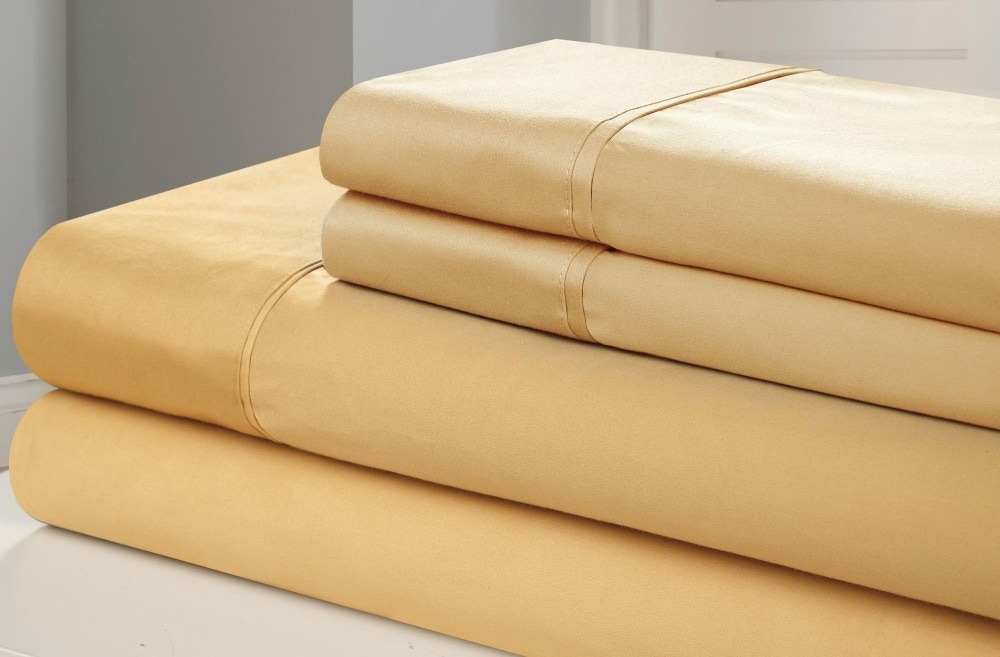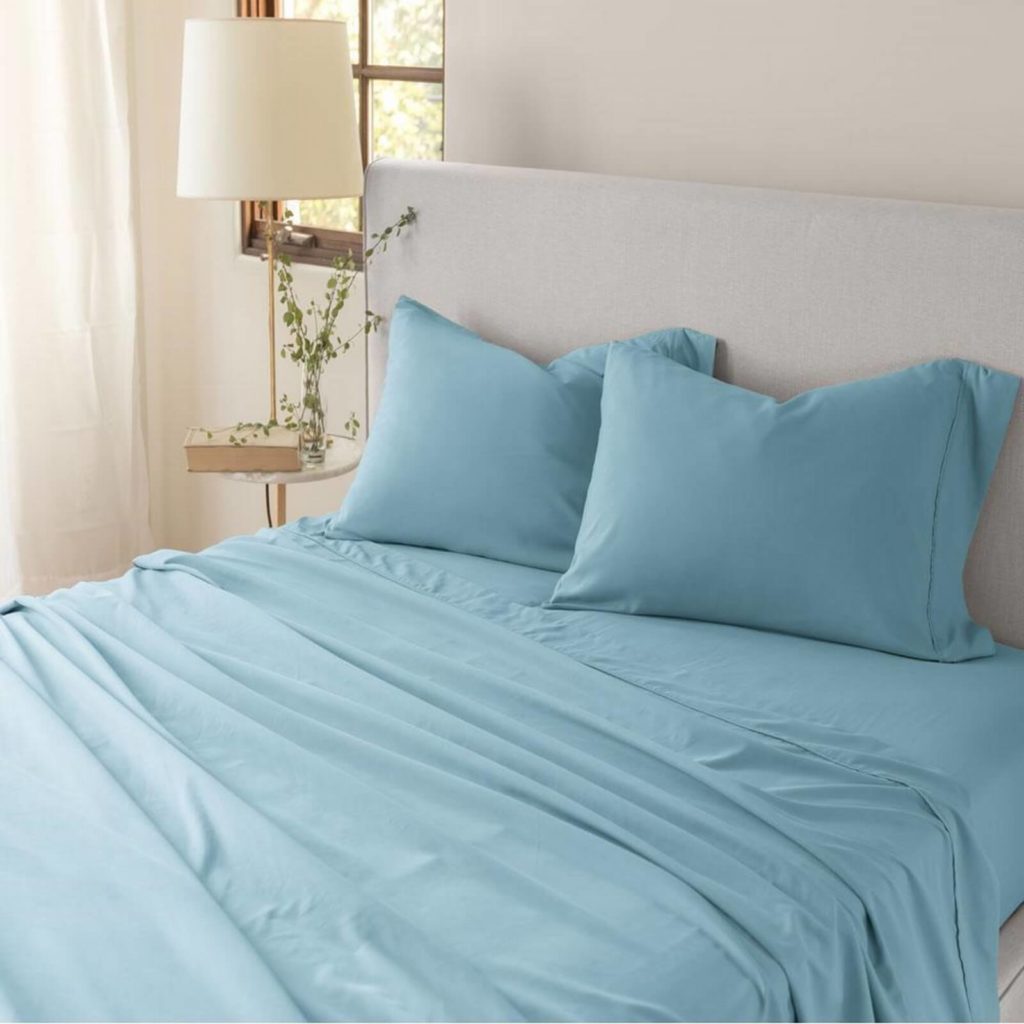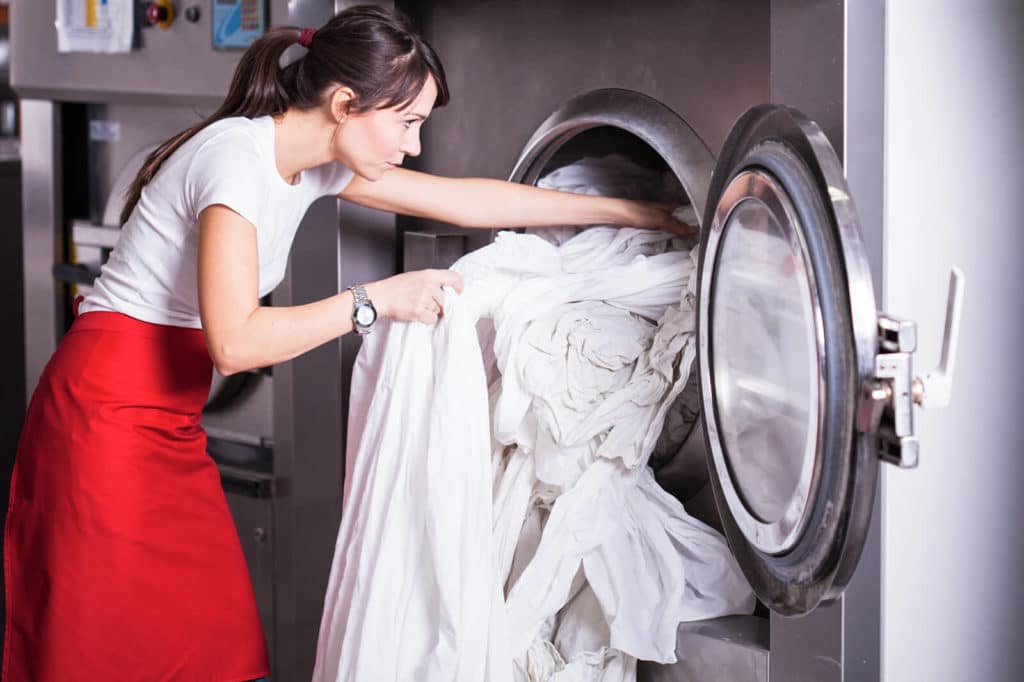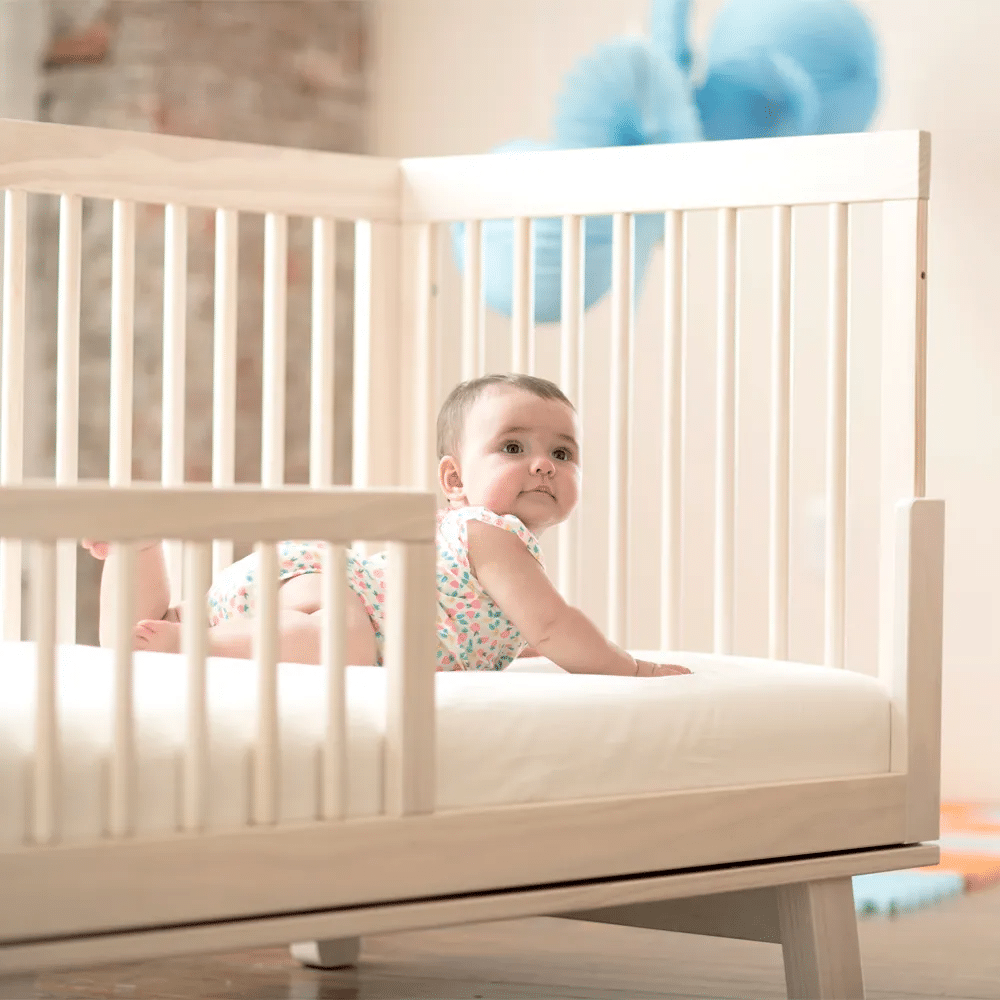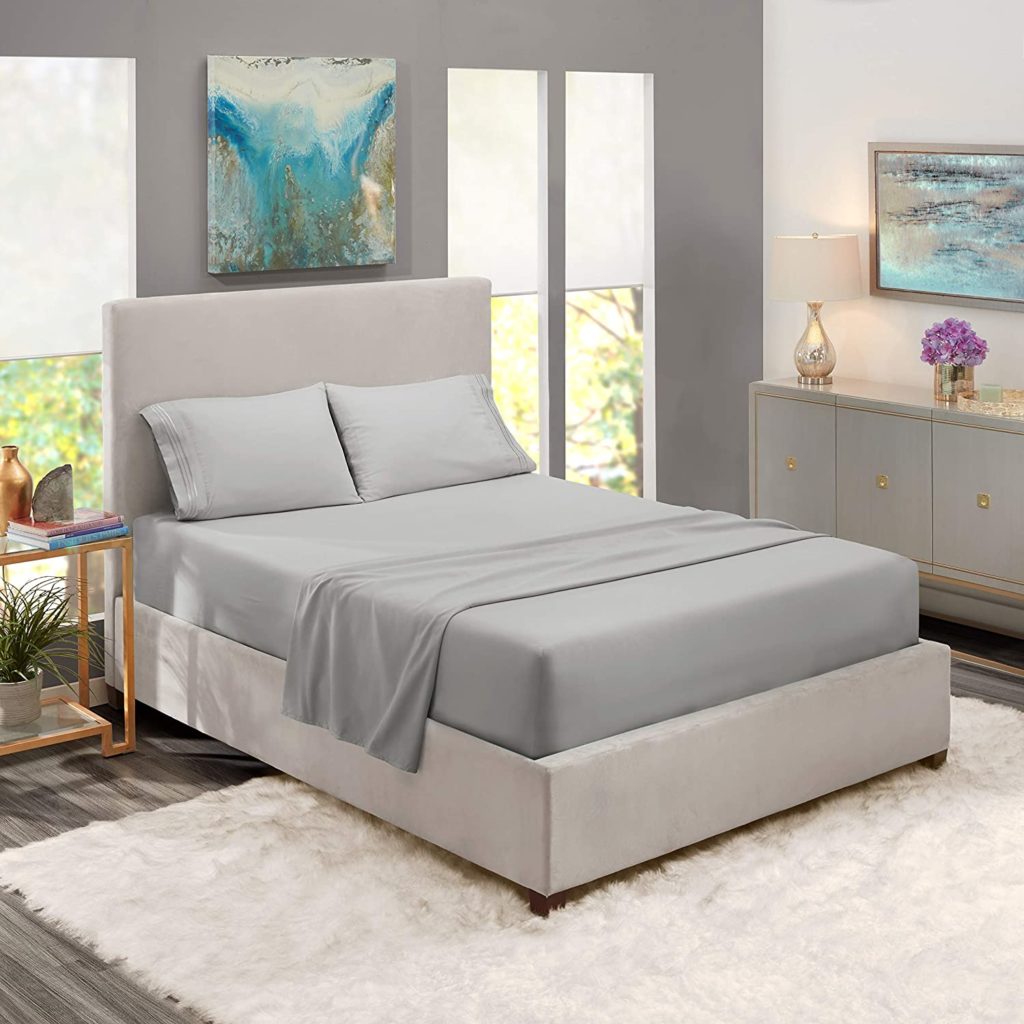

Cotton is still the undisputable material when it comes to quality and comfy bedsheets. However, there is an inspiration behind our Tencel sheets vs. bamboo sheets comparison article, which is valid with today’s planet sustainability goal.
While cotton still has the highest quality of all materials, its environmental cost is giving it a bad name in a period where environmental sustainability is an objective for many. The textile industry is the most polluted in the world after oil Trusted Source UN launches drive to highlight environmental cost of staying fashionable | | UN News It takes around 7,500 litres of water to make a single pair of jeans, equivalent to the amount of water the average person drinks over a period of seven years. That’s just one of the many startling facts to emerge from recent environmental research, which show that the cost of staying fashionable is a lot more than just the price tag. | news.un.org , according to the United Nations. However, cotton takes more than 60% share in the textile industry as it uses 16% of the pesticides Trusted Source Environmental impact of fashion - Wikipedia en.wikipedia.org that are used around the world.
For those who love eco-friendly materials, there are so many options to choose from nowadays. However, with bamboo and Tencel fabrics, which are now used in making sheets, asides from their eco-friendly properties and production processes, they are breathable and dry faster than most cotton sheets. These materials are also more resistant to odor and are naturally thermo-regulating.
So, if we have to drop cotton due to the ecological strain of its growing and production processes, which should you choose? Tencel or bamboo sheet? In this guide, we will compare both materials and review what their properties are.
From plants that bring you luck to beautiful, earthy cookware, there is so much to love about bamboo, both aesthetically, functionally, and environmentally. As one of the fastest-growing plants in the world, with a fewer need for pesticides and fertilizers, bamboo is an excellent sustainable alternative to other conventional materials such as plastics and conventionally grown cotton.
Bamboo sheets have several advantages. They are breathable, light, and silky to sleep on. But not all bamboo-based fabrics are “greener” for you or the planet. You have to look at where it is coming from and how it is manufactured. Some bamboo sheets are processed with a lot of chemicals.
So, not all bamboo-based sheets are the same. A commonly seen bamboo-based fabric is “bamboo rayon.” Rayon is a man-made fiber that uses regenerated cellulose found in plants and trees.
Bamboo rayon uses cellulose from the bamboo plant. However, processing the fibers for bamboo rayon requires the use of many harsh chemicals, such as carbon disulfide, which can strip the plant of most of its natural benefits and sustainable qualities. This can also create a lot of air pollution.
According to the FTC, when bamboo is converted to rayon, there is often no sign of the original bamboo plant in the final product.
Another commonly found bamboo-based fabric is bamboo viscose, which is similar to bamboo rayon in texture and the manufacturing process. The two are often mentioned interchangeably.
Bamboo lyocell, however, is a green alternative. It involves similar cellulose processes involving bamboo processes but is devoid of all the used toxic solvents. Lyocell’s process is known as what is called “closed-loop.” It produces minimal waste as well as emissions while also conserving water.
Bamboo is also known for absorbing CO2 from the atmosphere. Research from Japan shows that bamboo can absorb up to 12,000 tonnes of CO2 Trusted Source The bear's necessity | Environment | The Guardian Bamboo ‘corridors’ could save pandas and the planet, writes Keith Laidler. www.theguardian.com from the air per annum.
Asides from the eco-friendly benefits they present for our planet, the best bamboo sheet products are often breathable and hypoallergenic.
In its purest form, a fabric made from bamboo, commonly known as bamboo flax, begins with the stems shredded and degraded by natural enzymes.
Once it resembles a pulpy substance, the natural fibers are mechanically combed and spun into yarns, which are then woven into sheets.
This process is similar to that of linen and hemp-based fabrics.
Bamboo-based sheets are more like the texture of silk. Thanks to the natural properties of the plant, it is also a very breathable fabric.
It dries 50% faster than most cotton sheets. Bamboos sheets are also very resistant and absorbent to odor. They are naturally thermo-regulating materials. They will keep you dry and cool while you sleep, most especially during hot seasons.
On the other hand, durable and bamboo-based fabrics do not use formaldehyde-based chemicals that help keep them wrinkle-free. So, you need to have your iron on hand or just hug the wrinkle!
From an environmental standpoint, unless you use 100% natural and organic cotton, many conventional cotton items, from sheets to pillowcases, require more water for harvesting and processing.
Compared to bamboo, which uses an average of 12 gallons of water per pound of fabric, cotton requires 200 times more, in part because it is so sensitive to drought.
In fact, making a pair of jeans, which is usually made with cotton, requires the use of 7,500 liters of water, according to the UN. This is the same amount of water an average person drinks over a period of 7 years! The conventional cotton crop also accounts for 16% of the world’s food and fiber insecticide use.
Although the processing of Tencel sheets is more environmentally-friendly than bamboo sheets, it can still surpass cotton in this aspect.
Bamboo-based fabrics often have the feel of a higher thread count by using a fraction of the fabric. For example, a bamboo-based fabric with a 320 thread count could pass through a cotton equivalent with a 500 thread count!
For those looking to buy premium bamboo sheets, our top recommendation is the PlushBeds Bamboo Sheet Set. These sheets are designed to provide you with everyday comfort and keep your body cool and dry.
Tencel sheets are part of the family of synthetic and man-made fibers made from biodegradable materials. This distinguishes them from synthetic fibers derived from petroleum polyester.
The name Tencel refers to a fiber produced from crushed cellulose dissolved in NMMO- monohydrate (N-methyl-morpholine-N-Oxide-monohydrate); the resulting product has a consistency similar to honey but hardens when it passes the supply chain. It is therefore distinguished from viscose, which uses carbon sulfide and is still part of the cellulose fibers.
The main features of the best Tencel sheets are excellent resistance, good breathability, and absorption of moisture. The Tencel sheet is resistant up to 40°C without any problem; if it is washed at 60°C, however, a shrinkage of about 5% is noted. It is very soft, smooth, and shiny, with fluid drapery.
If, however, it is not subjected to appropriate finishing procedures, it easily produces the unsightly pilling, which spoils its peculiar characteristics of softness and shine. These finishing operations, on the other hand, can reduce the characteristics of breathability and moisture absorption.
The production process is not very polluting: even the solvents used are non-toxic, as well as being completely recyclable. However, although Tencel is biodegradable when placed in a landfill, it does not decompose completely. In any case, from specific studies, it appears that it can decompose in just 8 days in certain environments.
Tencel sheets are derived from the eucalyptus tree. It only takes half an acre of trees to make one ton of Tencel fiber. In comparison, cotton needs at least 5 times as much with good quality soil.
As for water, eucalyptus trees do not need irrigation, but industrial activity needs water to process the pulp and transform it into Tencel fiber. It is estimated to use 154.7 liters of water per kilo of fiber (much less than organic cotton from California).
Like most man-made fibers, Tencel requires more energy to produce natural fiber. However, the manufacturer mainly uses low-carbon biofuels and only 14% fossil fuels to keep carbon emissions lower.
Tencel is produced in Austria, the United Kingdom, and the United States, but producers import eucalyptus from South Africa.
While plants can grow without chemicals, their transformation into textile fibers usually requires some harmful chemicals. (This is often the case with bamboo.)
It is first necessary to identify in which category this fabric is placed. There are two main categories of fibers: natural fibers such as wool, hemp, cotton, and silk; and man-made fibers synthesized from petrochemicals such as polyester and nylon. Tencel falls in the middle. The main raw material for lyocell, as we have said, is the cellulose of the wood pulp (obtained from trees such as eucalyptus, oak, and birch).
Tencel uses a non-toxic solvent for the production process called “closed-loop”. The main steps to obtain this fabric are:
Excellent resistance, good breathability, and moisture absorption are the main characteristics of Tencel or Lyocell sheets. Tencel fiber deriving from eucalyptus is smooth and elastic to the touch.
The main advantages of this material are listed below:
Having seen the individual properties of both materials, which one is better to sleep on? We will answer this question by looking at both materials through five criteria:
Asides from being luxurious, Tencel sheets are soft, silky to the touch. They can also help you sleep cooler, which makes them ideal for hot sleepers and hot weather conditions. Bamboo sheets also feel soft, comfy, and drapey, similar to Tencel.
Tencel sheets are the best with anti-wrinkle properties. They out-perform both bamboo and cotton.
Again, Tencel sheets tend to be more durable and resistant to washing than bamboo sheets. Bamboo sheets cannot withstand rigorous washing and only need to be cold washed and dried in delicate. Otherwise, the fibers will deteriorate sooner. On the other side, Tencel is resistant to washing and even gets softer with each washing while retaining the color.
Tencel and bamboo sheets are known for their breathability properties, which surpass that of cotton. In fact, Tencel sheets are three times breathable and 70% more moisture-wicking than cotton. So, if you sweat a lot at night, Tencel sheets are the best option; edging bamboo sheets with a little margin.
This is a draw. Both bamboo and lyocell sheets are not just hypoallergenic – they have antibacterial and antifungal properties. Thus, they are an excellent choice for those with sensitive skin and allergies.
At the base of the development of these fibers, there is the aim of paying the utmost attention to the protection of the environment. Eco-sustainability in the field of textiles is vital without neglecting the line of clothing and changing fashions. Wood, however, is a natural renewable raw material.
Both Tencel and bamboo materials have better ecologically responsible properties, during the pre-factory stages, unlike cotton, which requires the use of a lot of pesticides. However, the winner in this Tencel Sheets vs. Bamboo Sheets comparison article obviously is the Tencel sheet. Tencel is a terrific product for ecological bedding materials, but it should be noted that it does not fall into the category of organic sheets unless it is blended with organic cotton. 100% lyocell products are ideal for use in direct contact with the skin to enjoy the comfort and its characteristics. They are hypoallergenic, breathable, durable, comfortable, cool to sleep on, and make fewer wrinkles.
